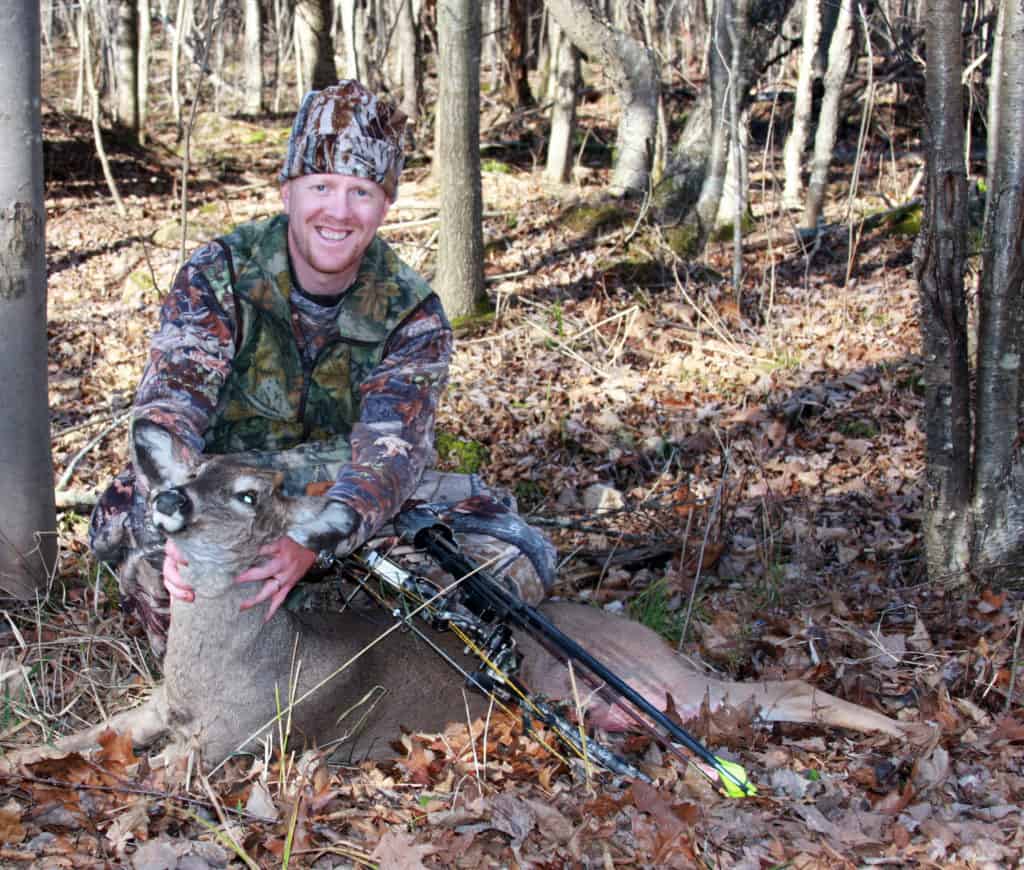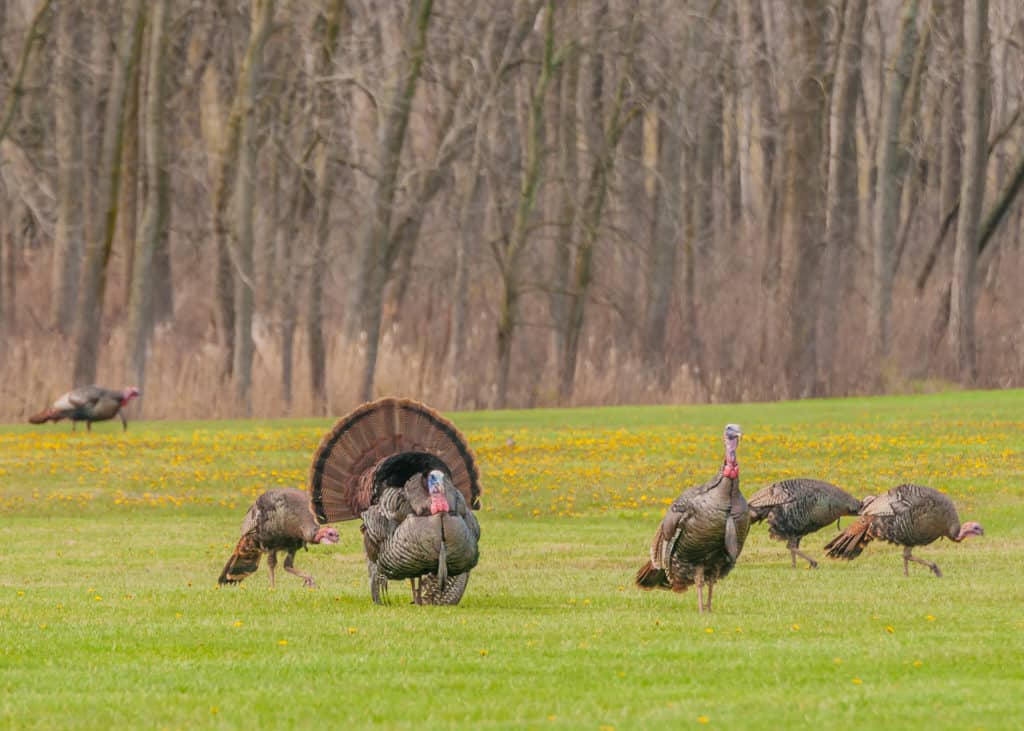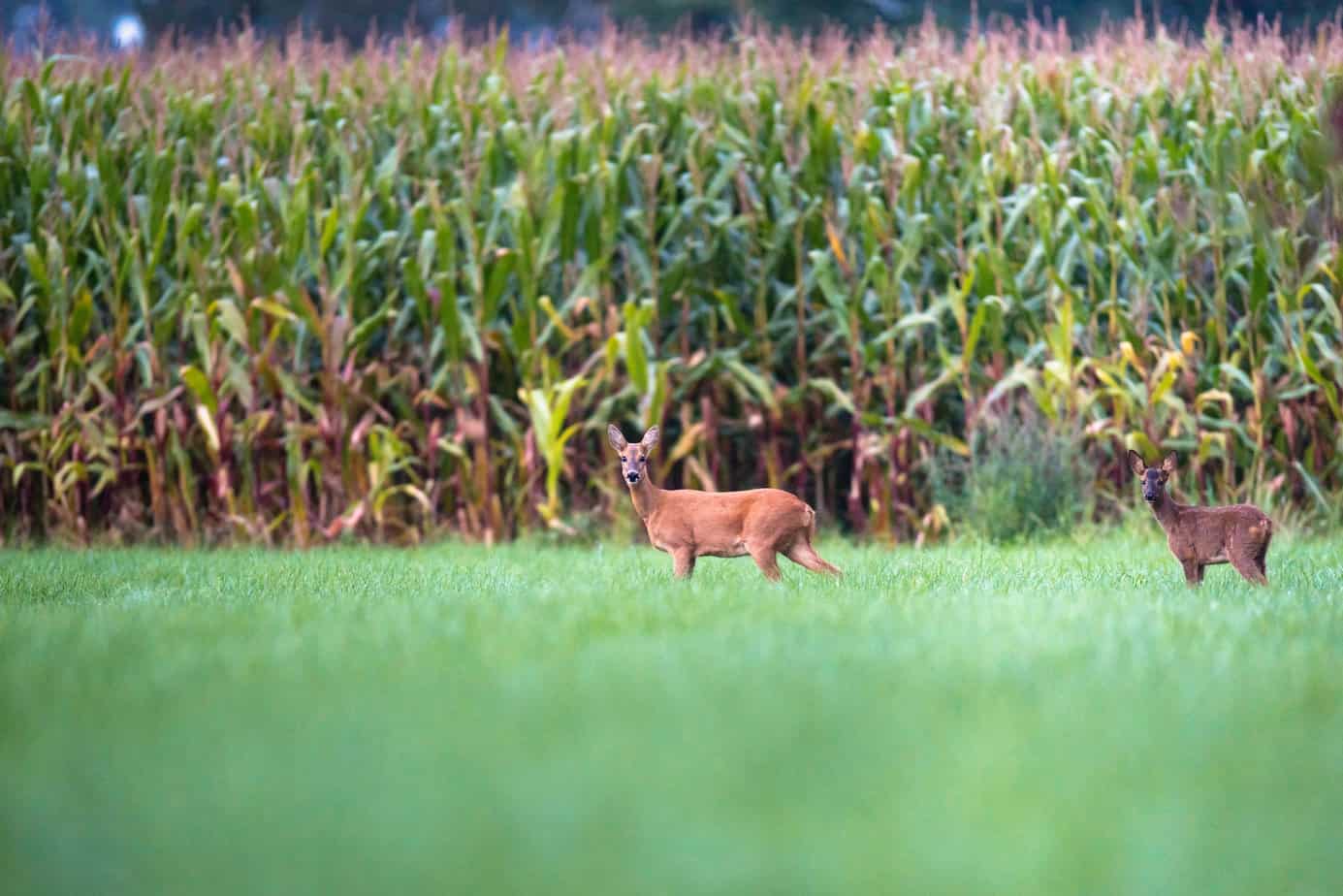There are three primary things hunters must consider for the number of acres they need to hunt on:
- The strategy for hunting
- The hunting weapon
- The species being hunted.
In this post, we will explain how to determine how much land hunters will need for hunting.
What is the minimum recommended or legal amount?
Many states, including Texas, legally mandate hunters to hunt on a minimum of 10 acres with a firearm.
However, many people recommend at least 50 to 100 acres for small hunting parties and 200 acres for larger hunting parties.
Strategies that affect the number of acres you need to hunt
The most important thing to consider about hunting is safety. All hunters handle lethal weapons that can injure or kill people just as easily as their game.
Therefore, hunters should consider how many acres they need to safely hunt with their weapon of choice.
The first thing to consider is your weapon’s range.
A bullet may be lethal as long as it is moving.
A rifle bullet can travel over a mile depending on the caliber.
- A .22 bullet can travel over a mile
- A .308 bullet can travel over three miles
- Shotgun projectiles can easily travel close to a quarter mile
A hunter should make sure there is a good backstop for their projectiles before taking a shot.
A backstop is anything that will absorb the energy from a projectile if the hunter misses their shot, or if (when) the projectile travels through the game.
Dirt is preferable, which is why tree stands are common ways to hunt.
When a hunter is high off the ground, they shoot at their game from above, increasing the likelihood that they will have a good backstop.
This is in addition to the obvious advantage of concealment.
A hunter could have as little as 10 acres, or where allowed, 5 acres to hunt with the proper tree stand.
If a hunter is planning to hunt on the ground, they will need even more land to ensure there are good backstops.
Weapon type will impact the number of acres you need to hunt

The range of a rifle or shotgun projectile is very large, which is why 50 to 100 acres is recommended with firearms.
However, there are other common weapons hunters use including:
- Bows
- Airguns
- Slingshots
Bows should be considered similar to firearms
While bows are considered short-range weapons, an arrow can still travel 500 yards, comparable to a shotgun.
Average hunters are recommended to shoot targets no more than 60 yards away.
In addition, hunters should know that even with a bow, the arrow may pass through even a big game from that distance.
Therefore, if bowhunters plan on hunting from the ground they should hunt on at least 10 acres of land and are recommended to hunt on 50 to 100 acres.
However, in a tree stand, depending on the game, many places will allow hunters to hunt on as little as 5 acres of land.
Airguns have a shorter range but are still lethal
Airguns only have an effective range of up to 50 yards for most game.
If hunters use an airgun, they may be allowed to hunt on as little as 5 acres of land, even on the ground, but they should check local laws to make sure.
It may be recommended they still hunt on more land or in a tree stand if they have safety concerns.
Slingshots are short-range but pack a punch
Hunting slingshots are still used for small game and sometimes even “large” game.
While they have an effective range of only 10 yards or so, the projectiles can still travel hundreds of yards.
Luckily, the energy from slingshot projectiles quickly dissipates and people are comfortable with hunters using slingshots on small acreage.
Local laws should be checked to ensure they are hunting properly.
Certain species require different amounts of land
Now that safety (the number one priority) is addressed, we can start to address more fun parts of hunting, including understanding your game and planning around it.
The amount of land a hunter needs is dependent on the game they plan to hunt.
The land is only hunting land if the game commonly visits.
Luckily most game are creatures of habit, which can make it easy to choose the right location.
There are still many aspects hunters should consider including:
- Food
- Water
- Habits around humans
We will establish each of these for the most common game.
Deer
Much like any animal, deer need food, water, and shelter.
Areas large enough to hold a body of water such as a pond, lake, or creek may attract deer.
In addition, deer have a typical diet of wild easy-to-reach vegetation.
This should include:
- Perennial-style wood plants
- Wild fruits and acorns
- Brush-style vegetation
Any land like this may attract many deer, including whitetail deer, but not if there are many signs of humans.
Sometimes hunting land needs 100 acres just so there is enough space away from roads, residential areas, and even other hunting grounds where some hunters use rifles or other firearms.
Turkey

Turkey needs water and food much like deer.
However, turkeys may stick to a particular water source, especially in dry areas, because they are more willing to form habits when it comes to water.
Having a property with an established water source for turkey will be sufficient, so hunters will only need 5 or 10 acres to hunt these wild birds.
Turkeys are more willing to gather around where humans are and can even be aggressive.
Therefore, turkeys will not avoid areas where there are signs of hunters close by and hunters may get by with only 5 to 10 acres.
Hog
Wild hogs, including feral hogs and collared peccary, need a significant amount of land for food and water much like deer.
Like turkeys, they are more aggressive and less afraid of humans.
Therefore, hogs do not need as much land for hunting, but 50 to 100 acres are still recommended.
Conclusions
It is highly recommended that hunters have as little as 50 to 100 acres of land, especially if they are hunting with other people, firearms, or even bows.
However, hunting from a tree stand can help to minimize the amount of land you need.
Hunting game from heights maximizes a hunter’s chances of concealment and a good backstop, which requires only 5 to 10 acres.
However, hunters should consider other aspects such as the needs of their game, and should obtain or hunt on land sufficient for their games’ needs.
A successful hunter considers people’s safety and their game’s needs over the hunt.

